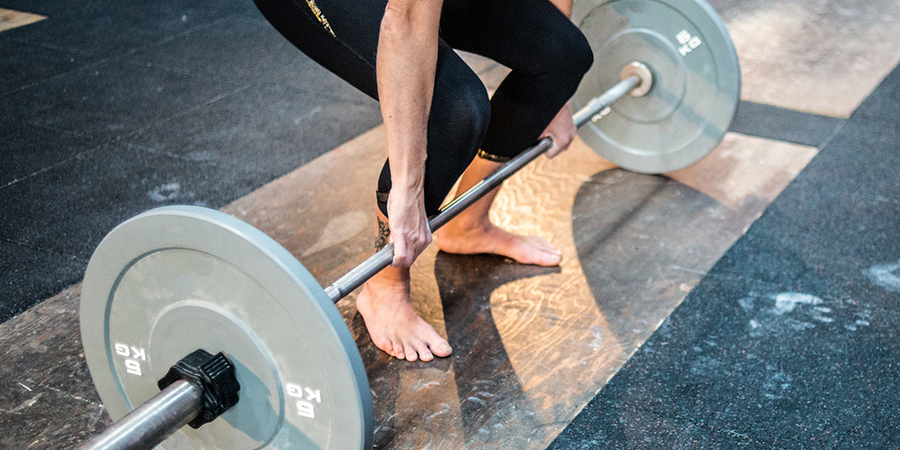
3 Reasons Why You Should Try Training Barefoot
By Jenessa Connor
A supportive pair of shoes is the first item on most lists of essential workout gear, so how did barefoot training become a thing? Look down and around, and you're bound to see people doing all manner of fitness — from deadlifting to trail running — sans shoes.
Are these unshod athletes just showing off, or are there real benefits to barefoot training? We checked in with the experts for their thoughts on the pros and cons of going shoeless so that you have all the info before jumping into this trend bare feet first.
Amplify your performance with scientifically formulated supplements that pro athletes trust. Shop all LADDER supplements.
.
Is It Safe to Train Barefoot?
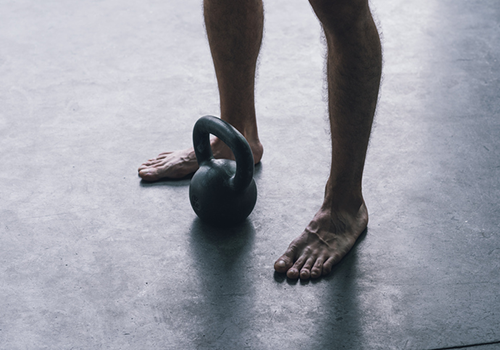
Barring any environmental or health-related concerns, it's probably safe to try barefoot training. However, there are some safety factors to consider.
Environment
Before ditching your kicks, the first thing to assess is your environment. While some fitness studios may allow you to go barefoot or even ask that you remove your shoes for certain activities, others may require athletic footwear for safety and hygiene reasons. Of course, you should follow the facility's guidelines.
If you tend to exercise outdoors, take a look around and use your best judgment. If the ground or anything on it could potentially cut, scrape, or burn your feet, keep your shoes on.
Medical conditions
Next, consider your own feet (and the body that's connected to them). “Anyone who has any kind of sensory loss in their feet, or those at higher risk of sensory loss in their peripheries, like diabetics, should avoid training barefoot," says Jack McNamara, MSc, CSCS, an instructor at TRAINFITNESS.
If you have a chronic condition that affects your walking gait, McNamara recommends consulting a podiatrist before attempting barefoot training. A history of injuries (especially shin splints, ankle or foot pain, and stress fractures) also warrants a conversation with your doctor.
Start slow
Experiment with short periods of activity at first, sticking to bodyweight exercises and avoiding plyometric movements, including running. Unless you're an experienced runner, Niraj Vora, PT, co-founder of The Stride Shop in New Orleans, Louisiana, recommends starting with a walking program and foot-strengthening exercises before running barefoot.
“Our tendons, muscles, and bones undergo changes with consistent training that are critical to withstanding the stress that running puts on our bodies," Vora says. “If you have been running consistently for more than a year, then we recommend starting with short bouts of barefoot running starting at 30 seconds to one minute mixed in with walking."
.
What Are the Benefits of Barefoot Training?
Considering how much we pay for athletic shoes, there better be some good reasons for not wearing them. Here are a few potential benefits of barefoot training.
1. Greater foot mobility
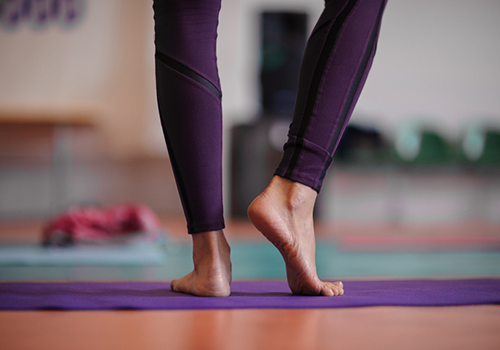
Some forms of exercise require foot mobility that's restricted by shoes. If you've ever done an exercise like Pilates, you know that subtle changes in foot position (e.g., pointing the toes or flexing the foot) can affect the intensity of a movement or completely change its focus. And if yoga's your jam, a clunky pair of sneakers will only throw off your balance and slow down your sun salutations. To experience the full range of motion of your toes, feet, and ankles, you need to go barefoot.
2. Stronger feet
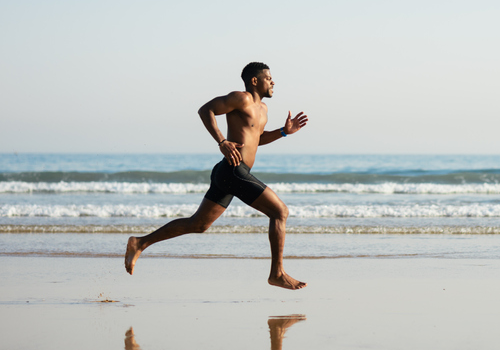
The springy soles of your favorite running shoes are comfy, but some experts believe that all that cushioning may be making your foot muscles weaker. “Supportive shoes are designed to decrease the work that these [foot] muscles have to do, which is great in most cases," says Dr. Mike Rushton, DPM, co-founder and medical director of Forward Motion Medical in St. George, Utah. “But, if you never let these muscles function properly, like anything else, they get weak and lose their ability to do their jobs effectively."
This can shortchange your athletic performance and eventually lead to muscle imbalances and injuries. “Barefoot training allows your feet to work naturally, engaging a whole new set of muscles that you probably didn't know that you have," Rushton says.
3. Improved body awareness
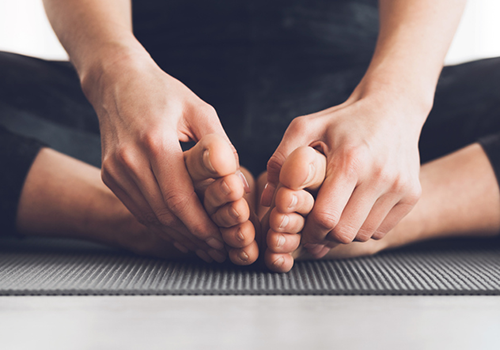
Besides doing all the heavy lifting for your foot muscles, shoes also act as a barrier between the nerve endings in your feet and the surface on which you're standing. Slipping off your shoes allows for a better sensory experience, which can help with proprioception, or your awareness of your body and how it moves in relation to its surroundings.
Being able to feel the ground beneath you may also help you achieve better form and alignment in certain lifts. “To achieve proper form in deadlifting, it's best to use a shoe that's flat, without any cushion," says Jack Craig, CPT, at Inside Bodybuilding. “Similarly, squatting barefoot can help build flexibility in the ankle and hips as the knees track forward and back, which helps properly target the hip flexors and hamstrings."
.
Can You Do Barefoot Training If You Have Plantar Fasciitis?
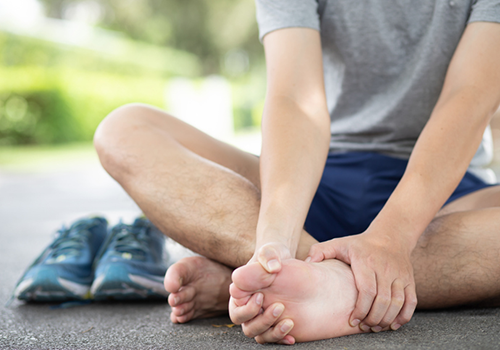
Plantar fasciitis occurs when the thick band of tissue connecting your heel bone to your toes becomes inflamed. It's often very painful and should be evaluated by a medical professional.
While you should listen to your own doctor's recommendations regarding physical activity, it's probably best to avoid barefoot training if you have plantar fasciitis. “Going barefoot for long periods of time should be avoided for people who have plantar fasciitis because the prolonged hard pressure of your heel and foot on solid ground can increase strain on the already inflamed foot arch and heel and can make symptoms of plantar fasciitis worse," says Dr. Kristen Gasnick, PT, DPT, at Holy Name Medical Center in Teaneck, New Jersey.
“Plantar fasciitis has a very strong link with footwear," Gasnick says. “So making sure that you invest in proper fitting shoes with good shock absorption and foot support can help decrease your plantar fasciitis symptoms and improve your ability to walk barefoot without pain once the inflammation resolves."
.
Barefoot Training Shoes

Intrigued but not yet ready to “bare" it all? These minimalist barefoot training shoes offer a barefoot-adjacent training experience while providing a barrier between you and the ground.
1. Vivobarefoot
Known for soles that are wide, flat, and flexible, Vivobarefoot offers a full line of minimalist shoes for the whole family.
2. Vibram FiveFingers
This is the closest you'll get to being barefoot without actually going barefoot. Vibram FiveFinger shoes are made with ultra-lightweight materials, flexible soles, and individual toe pockets.
3. Feelmax
Feelmax shoes, which range from sandals to hiking boots, are designed to fit like "a thin, flexible sock."
4. Converse
While not marketed as a barefoot training shoe, Converse sneakers, specifically Chuck Taylors, are often the preferred shoe of Olympic weightlifters, thanks to their flat soles.



